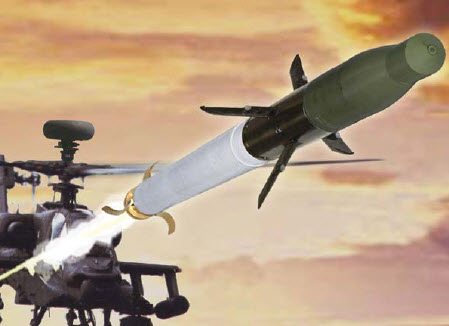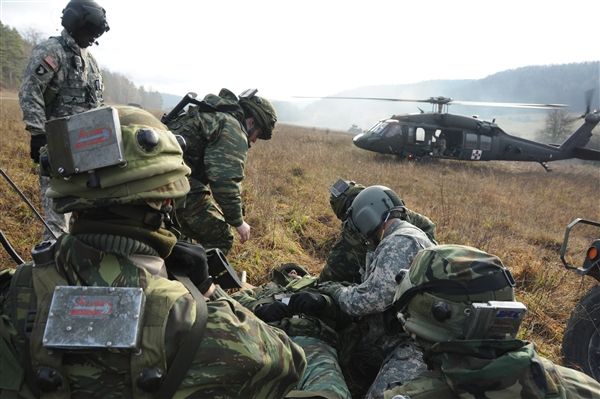BAE Systems’ Advanced Precision Kill Weapon System, or APKWS, has been shot almost 100 times in combat operations in Afghanistan this year, and there hasn’t been a single failure after launch.
“The vast majority have been direct hits,” said U.S. Navy Captain Brian Corey, APKWS program manager for PMA-242. “The missions we’re seeing require a lot of precision, and collateral damage is of concern.” That’s precisely why the APKWS laser-guided rocket system is the low cost weapon that U.S. Marine aviators on the battlefield fly with “day in and day out,” according to Corey.
APKWS is the U.S. government’s only program of record for the semi-active laser-guided 2.75-inch rocket. BAE Systems makes the semi-active laser guidance section that is simply inserted between the rocket motor and warhead of the Hydra 70 rocket. It is this middle section that provides precision engagement with lower collateral damage, while at the same time giving the military greater flexibility to engage the enemy.
“APKWS technology fills the weapons gap by providing a precision-guided rocket that will eliminate soft and lightly armored targets,” said Joe Tiano, BAE Systems’ APKWS program manager. “At one-third of the cost and one-third of the weight of existing forward firing laser-guided precision munitions in inventory, APKWS allows the military to implement a simple upgrade to an existing system instead of buying costly new weapons systems.”
To date, APKWS has been successfully launched from a variety of fixed- and rotary-wing platforms, including the AH-1W, UH-1Y, and AT-6C. The weapon’s versatility and proven success in theater have driven the company to look to expand its use on additional U.S. and international platforms. BAE Systems has also seen significant interest from a number of international customers for APKWS, which is available through the foreign military sales process.
“APKWS’ success in combat – combined with its low weight and low cost – highlights its potential as the choice for a close air support weapon system against soft and lightly armored targets for rotary-wing, fixed-wing, and unmanned platforms throughout the world,” Tiano said.











